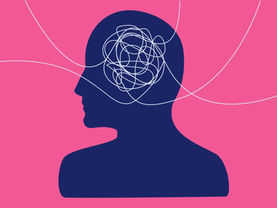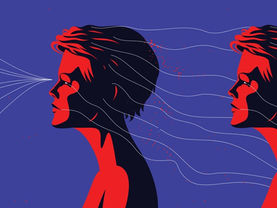When Trust Bleeds
- Shivika Sharma

- Jul 6
- 4 min read
Social media has become the heartbeat of information for young people today, particularly when it comes to navigating the complex world of health. It’s a dynamic, often chaotic space where conversations accelerate, and the lines between fact and opinion can blur with alarming ease. In this environment, fear can spread like wildfire. This is especially true for women’s health, a realm where so many vital topics have historically been brushed under the carpet. For many, the internet isn't just a platform; it becomes the only space where they feel empowered to ask questions, share vulnerable experiences, or speak freely about their bodies without judgment.
This underlying need for information explains why, when a rumor began circulating about certain sanitary pad companies adding chemicals to increase menstrual bleeding and boost sales, it ignited so quickly. There was no scientific proof, no confirmed reports from reputable sources – yet, thousands believed it. People shared frantic videos, passed on dire warnings in group chats, and the conversation exploded. What struck me most wasn't whether the rumor was ultimately true or false, but rather the disquieting ease with which it was embraced as fact. It revealed a deeper, more systemic issue that we, as young people navigating our health, simply cannot ignore.
From the moment many of us first experience menstruation, it’s shrouded in a peculiar discomfort and silence. For something so common, a biological process affecting half the world’s population for a significant portion of their lives, periods are still rarely discussed openly. Whether in schools, at home, or even in some doctor’s offices, the conversation often feels hushed. I remember my own experience: being handed a product, perhaps a hurried explanation, and the implicit instruction to manage it quietly, discreetly. There was little to no in-depth discussion about what’s actually in a pad, how it’s manufactured, or what long-term effects certain materials might have on our bodies. We're expected to simply use them, without question.
So, when a rumor like the one about chemical additives spreads, it doesn't stem from ignorance in the traditional sense. It emerges from a void; a gap in education, a profound lack of transparency from manufacturers and healthcare providers, and ultimately, a significant erosion of trust. This incident wasn't just about a misleading social media post; it was a symptom of a larger problem that has left young people feeling vulnerable and uninformed about their own bodies and the products they rely on daily.
This episode compels us to ask a much bigger, more critical question: Why do we know so little about the products we use so intimately, so frequently? Most sanitary pad packaging, for instance, lists technical terms and ingredients that are often incomprehensible to the average consumer. "Super absorbent polymers," "odor neutralizers," "synthetic fibers" – these terms might sound scientific, but they offer little real understanding. Scented options, gel cores, artificial materials – none of it is truly questioned by most, simply because we've been conditioned to believe we're not allowed to ask. But we absolutely should be. We have a right to understand what we're putting against our skin, inside our bodies, for hours on end, every single month.
This isn't an isolated issue confined to menstrual care products. It’s emblematic of the way women’s health has historically been treated within the broader medical space. For generations, research into women’s bodies and unique health conditions has been alarmingly limited, often lagging behind studies focused on male physiology. Symptoms are frequently minimized or dismissed, pain is rationalized away, and countless health concerns are wrapped in layers of shame, stigma, or discomfort that prevent open discussion and timely intervention. From endometriosis to PCOS, conditions that significantly impact millions of women often take years to diagnose, partly due to this systemic oversight and the prevailing silence around them not to mention, the self-diagnosis on the basis of internet.
What the sanitary pad rumor profoundly showed us is that young people are paying attention. They are actively seeking information and answers, even if the channels they're using aren't always accurate or reliable. This isn't a failure on their part; it’s a powerful signal to healthcare providers, educational institutions, and product manufacturers alike. It's a clear indication that there needs to be greater openness, more accessible and age-appropriate education, and clearer, more direct communication between all stakeholders and the people they serve.
We shouldn’t have to resort to scrolling through dubious social media feeds for answers we deserve to receive clearly, honestly, and without stigma in our real lives. Trust in medical products, and indeed in our entire healthcare system, begins with accessible, unbiased, and honest information. It starts with companies transparently listing ingredients in plain language, with doctors initiating candid conversations, and with schools providing comprehensive, inclusive health education that empowers young people to understand and advocate for their bodies.
The more we talk about these topics – openly, respectfully, and factually – the less space there is for fear and misinformation to take root. And the less we fear, the more we truly know what our bodies need, empowering us to make informed decisions about our health and well-being. Let's create a future where curiosity is met with clarity, and where every young person feels equipped to navigate their health journey with confidence, not just social media conversations.















Deep shi🔥🔥🔥